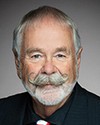Thank you. My name is Dr. Teresa Fowler. My pronouns are she and her. I'm coming to you from Concordia University of Edmonton, which is in Treaty No. 6 territory, a Métis nation of region 4.
Thank you to the committee for the time to present today and for allying parliamentarians who are working to move sport in Canada to be safe, inclusive and a site for children and youth to flourish in good health. During my five minutes I will speak about cultural reproduction through my lens as a researcher in masculinities, specifically in hockey culture, and the current brand of culture that needs to be shifted.
Cultural reproduction is a process by which cultural values and practices are passed down from generation to generation, and occurs through various mechanisms, including socialization and the media. Socialization is how individuals learn and internalize cultural norms and values through interactions with families, with peers and within social institutions such as sport. The media also shape individuals' perceptions of the world and reinforce certain cultural values and beliefs, such as broadcasting more professional men's sporting events over women's.
Cultural reproduction perpetuates existing inequalities and power structures, such as the culture of silence in sport. The culture of silence occurs when individuals or groups refrain from speaking about important issues or concerns due to fear, shame or a belief that their voice will not be heard or valued. Various factors, including power imbalance, social norms and the fear of retribution or backlash, can perpetuate the culture of silence in sport. For example, in our research with professional men's ice hockey players, many spoke about the precarity of their positions on their team. For some, there was a constant reminder of this as they had to walk past a shopping cart by the doorway—if a player did not meet the coach's expectation, they would find their equipment in a garbage bag in the shopping cart. Another player was told to not ask questions when they moved up to a different league.
In 2017, former NHL player, Corey Hirsch, wrote a poignant essay in the Players' Tribune about the impact of the culture of silence on the inability to talk about mental health issues openly. These are his words. He said:
After the morning skate, I grabbed an extra stick blade from the bin and stuffed it in my bag. When I got back to my hotel, I sat on the edge of the bed in silence and took out the blade. My plan was to break my hand and hide the injury until the next day at practice. That way, I could go down after taking a shot, and the team would send me home to recover without knowing what was really going on.
The culture of silence can have negative impacts on both individuals and society as a whole. It can prevent important issues from being addressed and perpetuate social inequalities and injustices. The culture of silence reproduces in sport due to the precarity of athletes' positions. Parents fear that their children will be benched; and children fear not meeting someone's expectations, so they remain silent even when abused. However, the culture of silence also silences. If the culture of silence continues to reproduce in sport in Canada, we will continue to have abusive players become coaches, and those coaches moved around due to their perceived fame.
Last summer we witnessed the strength of the reproduction of this culture of power through this committee, as Scott Smith refused to acknowledge his role in perpetuating a dangerous culture, and when Andrea Skinner stated to this committee that leadership changes were unnecessary. However, we have also seen positive outcomes from this committee, such as the changes happening within sport, some level of accountability, as well as people are now talking about sport in a critical way around their kitchen tables.
What we also need is action. To move sport to a place where it is safe, we must first know what we mean by “safe", and for whom. Certainly sport is not safe unless you fit the norm and you're silent, which is how this culture reproduces. For example, professional men's ice hockey remains homophobic, as highlighted by James Reimer of the San Jose Sharks this weekend refusing to wear a Pride jersey and then othering Nazem Kadri, the first Muslim to win the Stanley Cup. There are currently no outed gay men playing in the National Hockey League, and we only say “out” because it is normal to be in a heterosexual relationship.
If “safe” means that children and youth can participate in a sport free from maltreatment, then sport must disrupt how it reproduces an unhealthy culture. For that disruption, I suggest the following.
I support a call for a judicial inquiry into sport in Canada. A judicial inquiry is a powerful mechanism to reveal truths to engage accountability and transparency in government and other public institutions that receive funding from the federal government.
I call on the Government of Canada to move sport into the portfolio of health. By shifting sport into health, the lens changes. The focus changes. Instead of chasing medals and continuing an unhealthy culture, sport can be centred on health, reducing obesity, increasing well-being and providing children and families with the means to live active and healthy lives.
Thank you.



